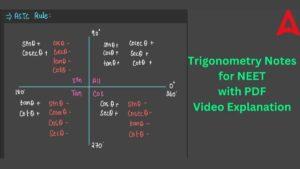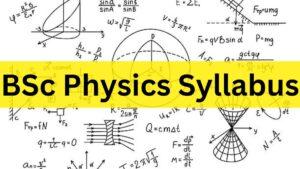In lifting an object, pushing a car, holding stuff, throwing the ball, catching the ball, construction works, and development works, the force is used everywhere. But from the point of view of science also, force is a very important element, about which all of us need to know.
Force
In today’s article, we have provided all the important information regarding Force using the easiest language. If you also want to know all the information regarding force in easy words, then stay with us till the end of today’s article.
What is a force? A Force is a vector quantity that can be related to a push or pull on an object. Push and pull come from the objects interacting with one thing to another thing. Words like strain and compress can also be used to indicate force.
Definition of Force
The push or pull on an item with weight causes it to change its speed. If there is no exchange, the objects no longer experience the force. Force is an outer agent can change a body’s state of motion or rest. The Force can be calculated using a spring balance.
- The common symbol is F.
- The SI unit is Newton.
- The Other unit is Dyne.
- A force equal to m*a
What are the Effects of Force?
Here are some effects of Force are as follows-
- Force can make a thing that is at rest into motion.
- It can stop a moving thing or make them slow.
- It can speed up the speed of a moving thing.
- It can also change the side of a moving thing along with its shape and size.
Formula of Force
Force is represented by the vector product of mass (m) and acceleration (a). The force equation, or formula, can be stated mathematically as:
F = ma
Where, m = mass, a = acceleration, It is measured in Newton (N) or Kgm/s2.The acceleration is given by the equation a = v/t
Where, v is velocity, t = time taken
So force can be described as follows: F = mv/t
The inertia formula is written as p = mv, which can also be expressed as momentum.
Thus, force can be defined as the rate at which momentum changes.
F = p/t = d/dt
Force formulas are useful in determining the force, mass, acceleration, momentum, and velocity in any given problem.
Unit of Force
Force is expressed in dyne in the CGS method (centimeter-gram-second system of units). In the SI unit method (standard international system), the unit is Newton (N). Know more details here – Unit of Force- What is the SI & CGS Unit of Force?
Types of Force
There are two types of forces depending on their works:
- Contact Force
- Non-Contact Force
Contact Force
Forces that take action on a body either directly or by using any medium are called contact forces. These are the example of contact force:
- Gravitational Force.
- Frictional Force.
- Tension.
- Spring Force.
- Gravitational Force:
The weight of a frame is a force that pulls the frame directly toward the earth. The force is due to the gravitational attraction between two frames.
W = mg
If it is measured in the rest frame, it is called clear weight.
- Frictional Force:
The part of the contact force parallel to the contact side is called frictional force. The direction of the frictional force is opposite from the attempted motion of the two sides in contact.
- Tension:
The force applied at any point in the rope, string, wire, or rod is called tension. We can calculate the tension at any point in the rope by cutting a suitable length from it and putting a spring scale. The tension is equal at all points in the rope only if the rope is non-accelerated and assumed to be non-weight.
T = mg + ma
Where,
T = tension in Newton,
m = mass in kg,
g = gravitational force.
- Spring Force:
Springs oppose efforts to change their length. In fact, the more you change a spring’s length, the more tightly it opposes. The force applied by a spring may be shown as:
F = -kx
[where x = change in length and k = spring constant. This method is also known as Hooke’s law.]
The negative sign in Hooke’s law shows that the direction of the force applied by the spring is opposite to the displacement that makes it. Such springs and ropes are normally referred to as perfect.
Non-Contact Force:
The Forces which act in free space without making direct contact with the body are known as non-contact forces. These are the example of non-contact forces:
- Gravitational Force
- Electrostatic Force
- Magnetic Force
Gravitational Force:
Gravitational force is a force that takes action between two frames that have a particular weight. Two frames with some weight try to attract each other and never split.
Electrostatic force:
The Electrostatic force that takes action between two charged frames. It is very alike to the gravitational force, but the only difference is that it takes action between weights, while this force work between charged frames.
Magnetic force:
The force applied between the iron and the magnet is a magnetic force.
How to apply force?
When an item attracts or repels one or more other items it is called applying some force. An applied force has various expressions, such as a change in the state of rest or motion, shape, or size of the object. The following features of applied force to understand how it acts:
- An applied force is the effect of the interchange between a minimum of two items.
- It has a magnitude and direction.
- It makes a vector quantity.
- An applied force can change the state of rest or motion of the items, the size, and the direction of the items.
What a Force Can Do?
Forces that change the shape of objects include forces acting on the walls of an inflated balloon pressed by our hands, it is stretched force produced by friction between two moving channels.
- Change Direction and Accelerate.
- Stop.
- Get Moving.
- Shape Change.
- Turning.









 CBSE Class 12 Physics Viva Questions wit...
CBSE Class 12 Physics Viva Questions wit...
 Trigonometry Notes for NEET, Download PD...
Trigonometry Notes for NEET, Download PD...
 BSc Physics Syllabus 2025: Check Year Wi...
BSc Physics Syllabus 2025: Check Year Wi...









